Menu
Physics Lesson 15.5.1 - Junctions, Nodes, Paths, Branches and Loops
Please provide a rating, it takes seconds and helps us to keep this resource free for all to use
Welcome to our Physics lesson on Junctions, Nodes, Paths, Branches and Loops, this is the first lesson of our suite of physics lessons covering the topic of Kirchhoff Laws, you can find links to the other lessons within this tutorial and access additional physics learning resources below this lesson.
Junctions, Nodes, Paths, Branches and Loops
First, we must explain some terms used when dealing with the Kirchhoff Laws.
a. A junction is a point in which two or more conducting wires converge.
Some examples of junctions are shown in the figure below.
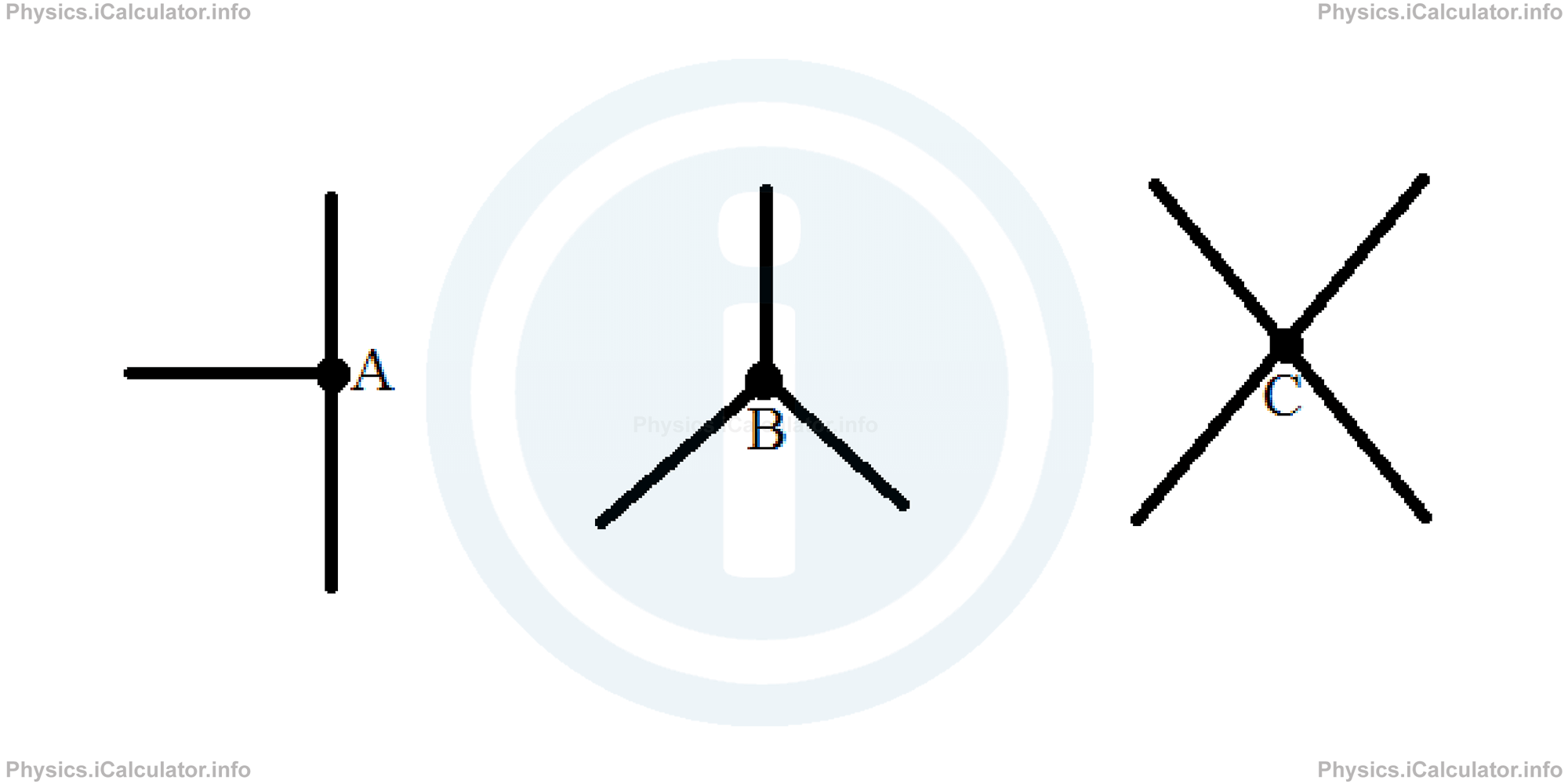
The points A, B and C are all junctions as they connect two or more conducting wires. The wires that form a junction may or may not have circuit components connected in them.
b. A node is a point where two or more circuit elements' terminals are connected together.
A node can be any point between two circuit elements such as the point N shown in the figure below.
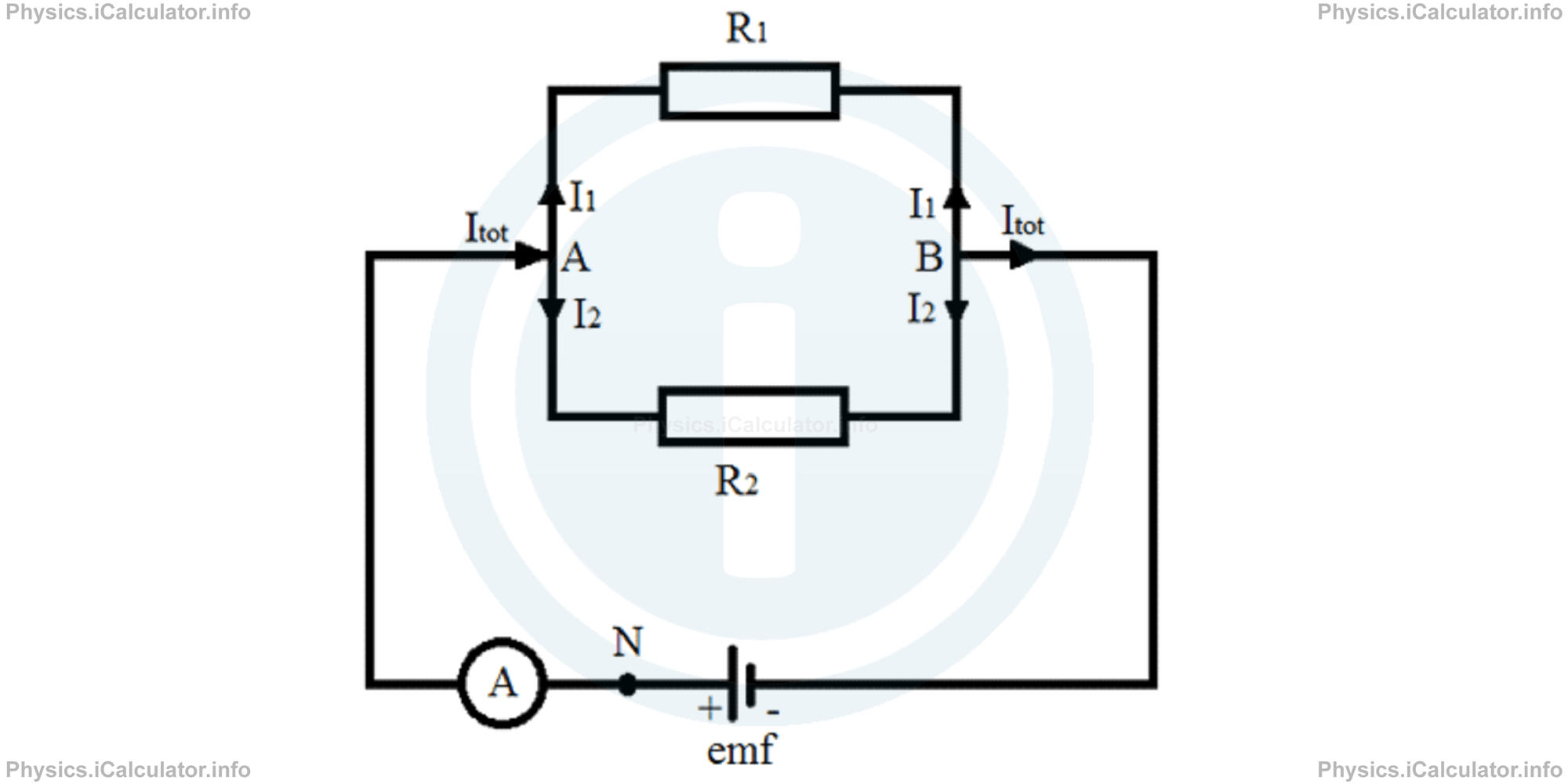
Node is represented by a dot in a circuit. The point N in the above figure represents a simple node as it connects two elements of the circuit that are in the same conducting wire. On the other hand, when the node is located in the junction of two or more wires, it is called a principal node. In the figure above, the points A and B represent principal nodes as they are located in junctions while the point N represent a simple node as it is located in a single wire.
We have encountered examples of nodes when explaining the parallel combination of resistors or cells in the previous tutorials. In those examples, there was an input (Itotal) and two outputs (I1 and I2) or two inputs (I1 and I2) and one output (Itotal) for the currents flowing in the two nodes.
If a short circuit (a conducting wire with no circuit components connected in it) connects two principal nodes, then these two principal nodes form a single simple node. Thus, for example if we connect the points A and B in the figure above with a conducting wire, the points A and B forms a single simple node as the current flows only in the direction AB (a short circuit is obtained), bypassing the two resistors R1 and R2. In this case, the new simple node is a point in the longest path that connects the ammeter and the cell, while the other simple node N is in the shortest path that connects these two components.
All points of a node have the same potential difference as the resistance of wire is not considered.
c. A path is the set of wires, components and nodes through which the current flows, where all the above elements are counted only once.
For example, the flow of current following the direction
represents a path, while
represents another path for the circuit above.
d. A branch is the path between one node and another node.
Thus, in the figure above, the paths A ― R1 ― B and A ― R2 ― B are examples of branches.
In more scientific terms, the path between two nodes which can absorb or deliver energy is a branch of an electric circuit. Therefore, the path A ― emf ― B in the above figure is also a branch.
Now that we gave the definition of branch, we can also provide an alternative definition for node based on the meaning of branch. Thus, a node is the point of connection between two or more branches.
e. A loop is any closed path in a circuit.
In other words, a loop is a closed path starting from a node passing through a set of nodes and returning to the starting node without passing the same node more than once.
It is easy to confuse loops and paths, so let's illustrate the difference through an example from the circuits above. Thus,
is a path as discussed earlier, while
is a loop (a closed path). Therefore, loop is an extension of the concept of path.
Example 3
Identify the junctions, nodes, paths, branches and loops in the circuit shown in the figure.
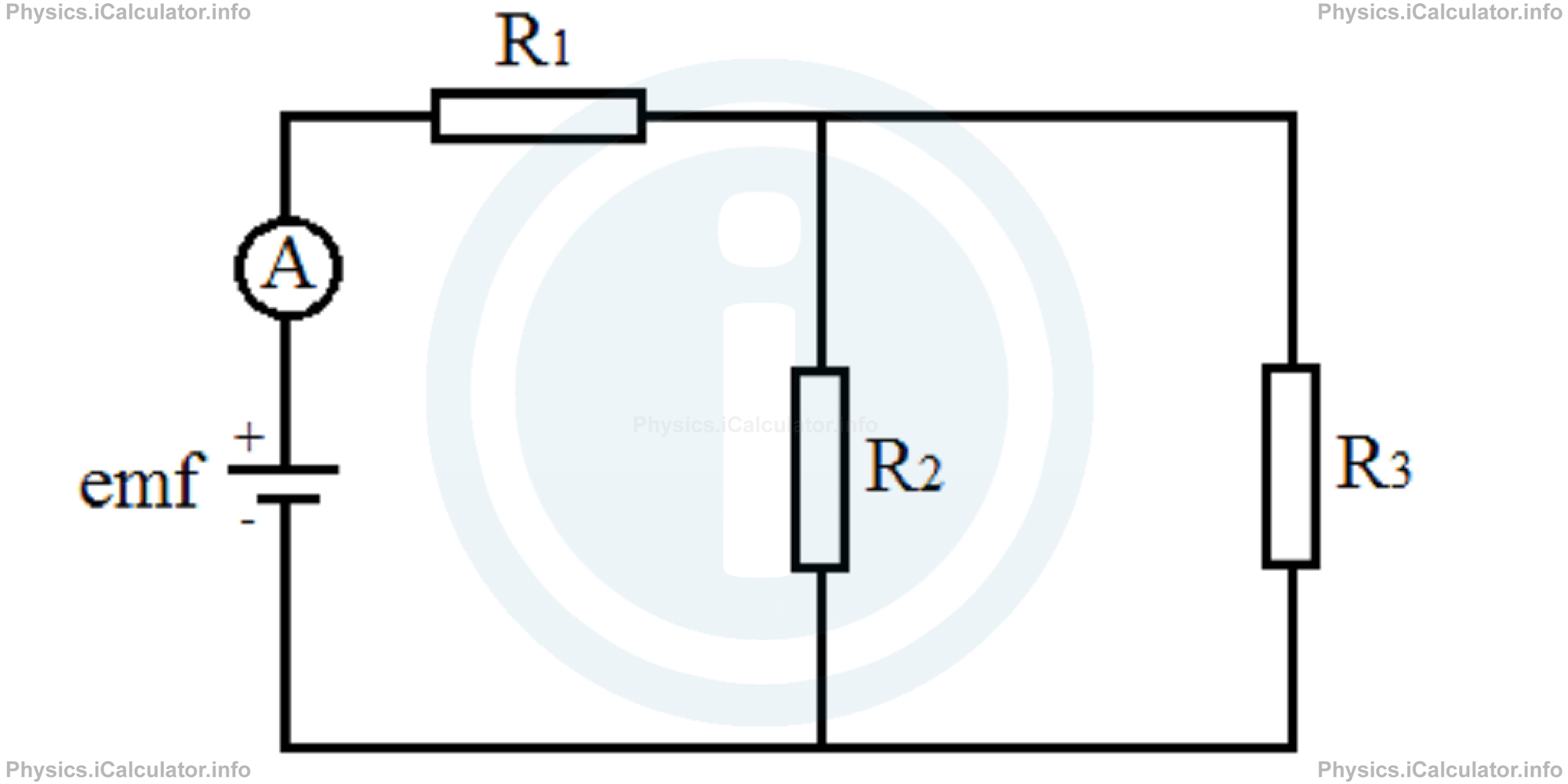
Solution 3
- There are two junctions in the circuit. They are at the points where two wires meet, aside the resistor R2 at the points A and B in the figure below.
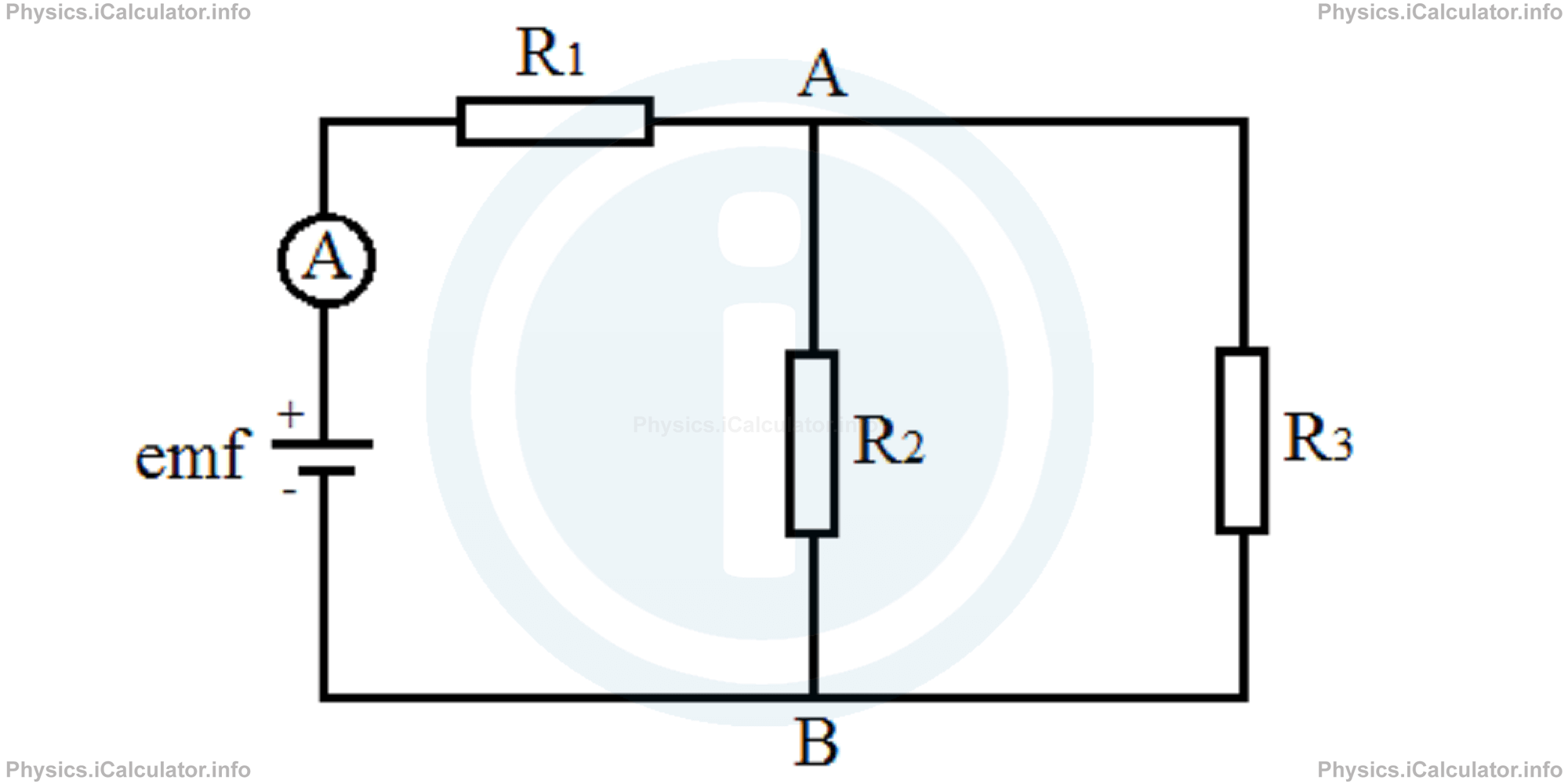
- There are four nodes in the given circuit. Two of them are principal and two are simple nodes. The principal nodes are at the junctions, i.e. at the points A and B, while one simple node is between the source and ammeter and the other is between the ammeter and the resistor R1.
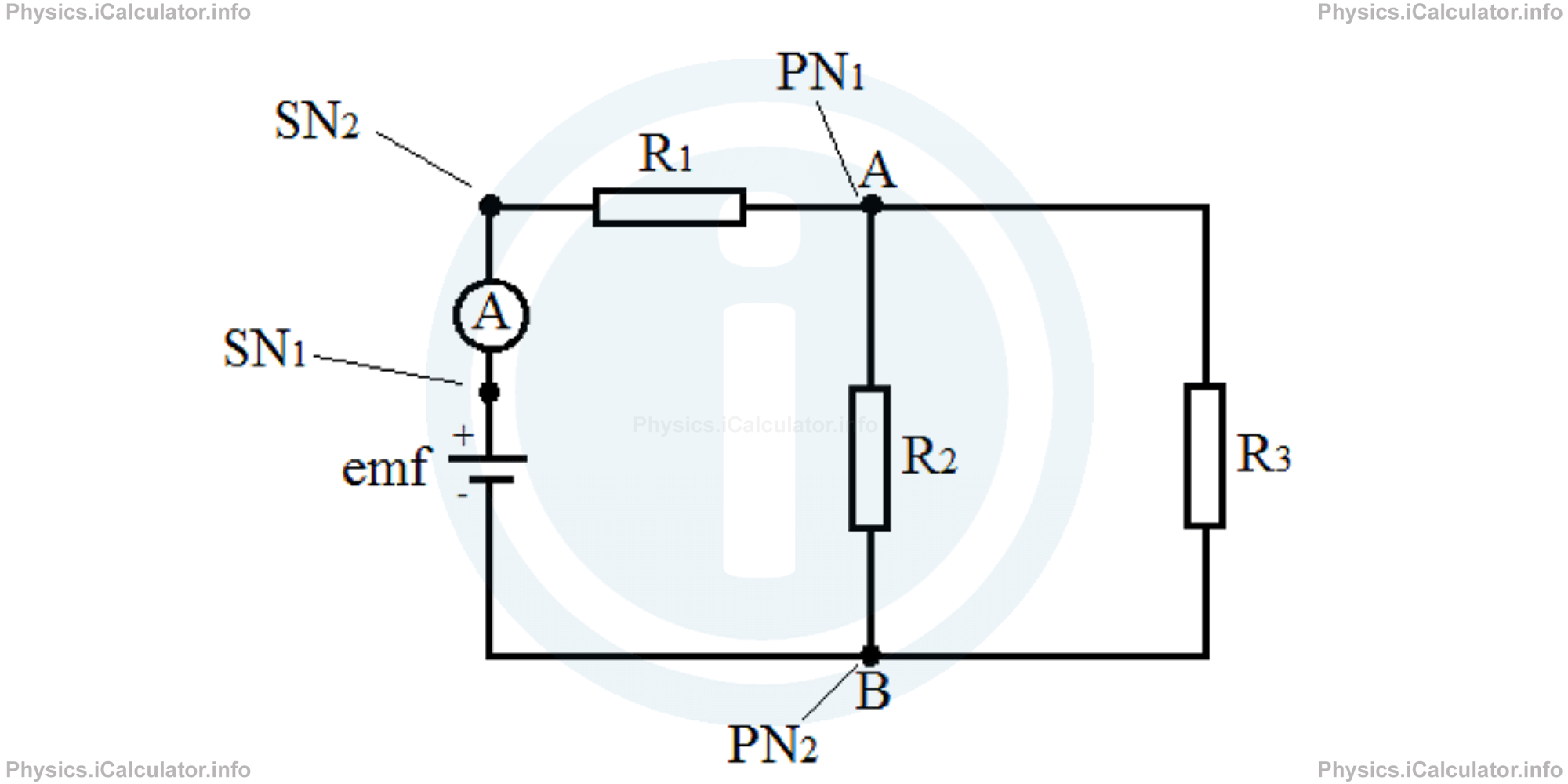
- There are two paths in this circuit:
- source ― SN1 ― ammeter ― SN2 ― R1 ― principal node A ― R2 ― principal node B
- source ― SN1 ― ammeter ― SN2 ― R1 ― principal node A ― R3 ― principal node B
- There are five branches in this circuit. They are:
- SN1 ― ammeter ― SN2
- SN2 ― R1 ― principal node A
- principal node A ― R2 ― principal node B
- principal node A ― R3 ― principal node B
- principal node B ― source ― SN1
- There are two loops in the circuit. Loops are extension of paths as unlike paths, a loop ends at the starting point. Thus, we have
- source ― SN1 ― ammeter ― SN2 ― R1 ― principal node A ― R2 ― principal node B ― source
- source ― SN1 ― ammeter ― SN2 ― R1 ― principal node A ― R3 ― principal node B ― source
You have reached the end of Physics lesson 15.5.1 Junctions, Nodes, Paths, Branches and Loops. There are 4 lessons in this physics tutorial covering Kirchhoff Laws, you can access all the lessons from this tutorial below.
More Kirchhoff Laws Lessons and Learning Resources
Whats next?
Enjoy the "Junctions, Nodes, Paths, Branches and Loops" physics lesson? People who liked the "Kirchhoff Laws lesson found the following resources useful:
- Junctions Feedback. Helps other - Leave a rating for this junctions (see below)
- Electrodynamics Physics tutorial: Kirchhoff Laws. Read the Kirchhoff Laws physics tutorial and build your physics knowledge of Electrodynamics
- Electrodynamics Revision Notes: Kirchhoff Laws. Print the notes so you can revise the key points covered in the physics tutorial for Kirchhoff Laws
- Electrodynamics Practice Questions: Kirchhoff Laws. Test and improve your knowledge of Kirchhoff Laws with example questins and answers
- Check your calculations for Electrodynamics questions with our excellent Electrodynamics calculators which contain full equations and calculations clearly displayed line by line. See the Electrodynamics Calculators by iCalculator™ below.
- Continuing learning electrodynamics - read our next physics tutorial: Electric Power and Efficiency
Help others Learning Physics just like you
Please provide a rating, it takes seconds and helps us to keep this resource free for all to use
We hope you found this Physics lesson "Kirchhoff Laws" useful. If you did it would be great if you could spare the time to rate this physics lesson (simply click on the number of stars that match your assessment of this physics learning aide) and/or share on social media, this helps us identify popular tutorials and calculators and expand our free learning resources to support our users around the world have free access to expand their knowledge of physics and other disciplines.
Electrodynamics Calculators by iCalculator™
- Amount Of Substance Obtained Through Electrolysis Calculator
- Charge Density Calculator
- Electric Charge Stored In A Rc Circuit Calculator
- Electric Field In Terms Of Gauss Law Calculator
- Electric Power And Efficiency Calculator
- Electron Drift Velocity Calculator
- Equivalent Resistance Calculator
- Force Produced By An Electric Source Calculator
- Joules Law Calculator
- Ohms Law Calculator
- Potential Difference In Rc Circuit Calculator
- Resistance Due To Temperature Calculator
- Resistance Of A Conducting Wire Calculator